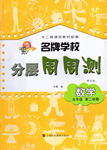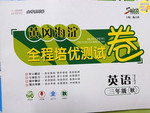题目内容
On Easter Day 1722,some European explorers found a lonely island in the middle of the Pacific Ocean. They 1 it Easter Island. The explorers found that the island had good soil 2 the 200 natives living there survived with little food. Even more 3 , these people also lived among the ruins of what might have been a once great civilization. All that is left of it are around 800 giant stone statues 4 human heads. They 5 up to 270 tons and the tallest measures over 11 metres. The stone men face 6 , rather than out to sea, and their eyes are focused upon the sky. They are all carved from 7 volcanic rock (火山岩) and some have hats on their heads and eyes made from white coral. Since their 8 , these huge stone men 9 one of the greatest mysteries of all time. Who built them? Why did they do it? Some experts believe the stone men are 10 to Inca stonework, and suggest the figures were created by people of Peruvian descent (血统). 11 have even gone so far as to say that they came from outer space. The latest suggestion 12 the idea that Easter Island represents one of the worst cases of resource abuse in human history. It is said that a small group of Asians settled on Easter Island 13 between 400 and 700 AD. They developed a great civilization with huge forests and 14 food. At the peak of their civilization, the people began to build the giant 15 men. Why they did this is still 16 but it is possible the figures represent the settlers’ gods or ancestors. 17 the statues grew larger, the people’s lifestyles became more and more wasteful. The forest began to disappear, which 18 all the animals dying out. 19 couldn’t get food and were forced to eat other humans. Society began to 20 and the islanders themselves finally destroyed the stone men.
1. A. said B. were called C. named D. spoke
2. A. and B. but C. however D. still
3. A. surprise B. surprised C. surprising D. surprisingly
4. A. looking B. resembling C. liking D. standing for
5. A. weigh B. lift C. get D. measure
6. A. forward B. outward C. onward D. inward
7. A. broken B. soft C. hard D. burnt
8. A. looking B. invention C. discovery D. covering
9. A. have happened B. have led to C. have taken place D. have created
10. A. usual B. common C. familiar D. similar
11. A. Another B. Other C. Others D. Many
12. A. is focused on B. is based on C. is depended on D. is concentrated on
13. A. some day B. one day C. sometime D. once
14. A. plenty of B. number of C. much of D. amount of
15. A. clever B. stone C. wooden D. iron
16. A. welcome B. known C. unimportant D. unknown
17. A. While B. After C. With D. As
18. A. resulted in B. resulted from C. created D. lay in
19. A. The islands B. The people C. The animals D. The Europeans
20. A. break out B. break in C. break into D. break down
1~5 CBDBA 6~10 DBCDD 11~15 CBCAB 16~20 DDABD

 名牌学校分层周周测系列答案
名牌学校分层周周测系列答案 黄冈海淀全程培优测试卷系列答案
黄冈海淀全程培优测试卷系列答案The most important holiday in spring, especially for Christians, is Easter. This Christian holiday is not on the same date every year,but it’s always on a Sunday. It can be any Sunday between March 22 and April 25. Many people celebrate Easter by buying new clothes. Children celebrate by hunting for colored eggs that their parents have hidden around the house. People also give Easter baskets filled with candy and other goodies to one another to celebrate the day.
But the holiday is more than new clothes and good things to eat. On Easter, many people go to church to celebrate Jesus’ resurrection(复活)from the dead. Most people color Easter eggs. Some people hide them. Others just eat them. But no matter what one does with Easter eggs,they are an important Easter tradition throughout the Western world. People from many different cultures celebrate Easter. In both America and Belgium, children look for Easter eggs hidden on lawns and in bushes. In America, children believe the eggs are hidden by the Easter bunny (兔子).But in Belgium, the hidden eggs are supposed to have fallen from church bells. In Bulgaria (保加利亚), red Easter eggs are lucky in churches. Bulgarian families also hit these Easter eggs together to see whose is the strongest. The winner looks forward to good fortune that year. Still dozens of other Easter traditions exist. In parts of Austria,for example,children sing from door to door and are rewarded with colorful eggs.
【小题1】Easter comes _______.
| A.on the same date every year |
| B.on Sunday on March 22 |
| C.on Sunday on April 25 |
| D.on a Sunday between March 22 and April 25 |
| A.go shopping, hide colored eggs and children hunt for them |
| B.give Easter baskets filled candy and goodies to one another |
| C.buy new clothes, hide colored eggs and children look for them around the house |
| D.both B and C |
| A.going to church to celebrate Jesus’ resurrection |
| B.buying new clothes |
| C.eating delicious food and paint color eggs |
| D.exchange beautiful gifts each other |
| A.In both American and Belgium, children hunt for Easter eggs hidden in rooms and in bushes |
| B.In Belgium, the hidden eggs are thought to have fallen from doorbells |
| C.In American, children believe the eggs are hidden by the Easter bunny |
| D.In America, the hidden eggs are supposed to have fallen from doorbells |
| A.blesses | B.Easter eggs |
| C.candy and goodies | D.Easter bunny |
 w people built them hundreds and hundreds of years ago.
w people built them hundreds and hundreds of years ago.  built over 4,000 years ago. Each tomb has walls shaped like triangles and a square base. The largest pyramid is more than 450 feet tall and contains more than two million stones. Each stone weighs more than two tons. Some of the stones weigh as much as 200 tons. More than 900 workers worked to move the largest stones into place.
built over 4,000 years ago. Each tomb has walls shaped like triangles and a square base. The largest pyramid is more than 450 feet tall and contains more than two million stones. Each stone weighs more than two tons. Some of the stones weigh as much as 200 tons. More than 900 workers worked to move the largest stones into place. sage?
sage?